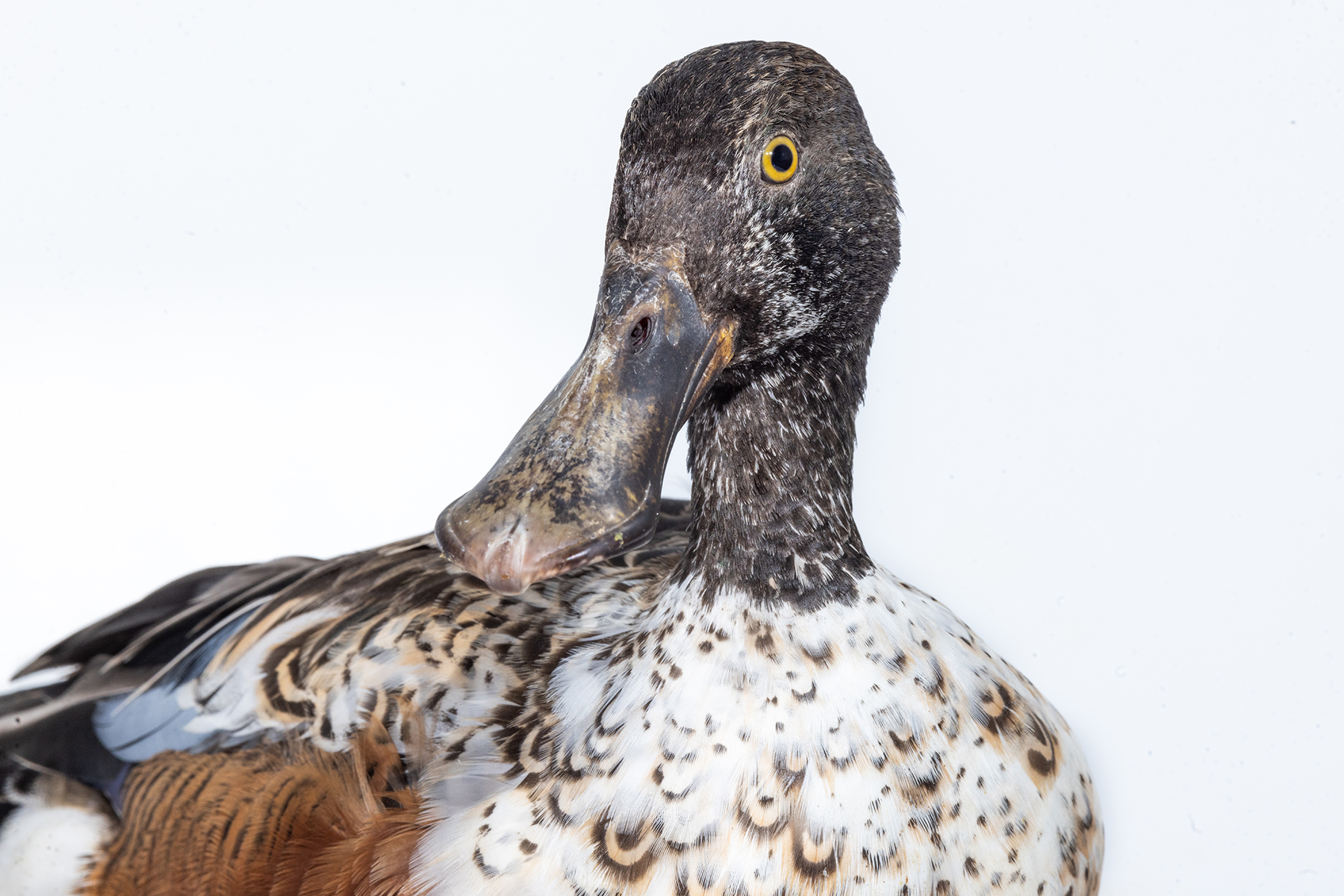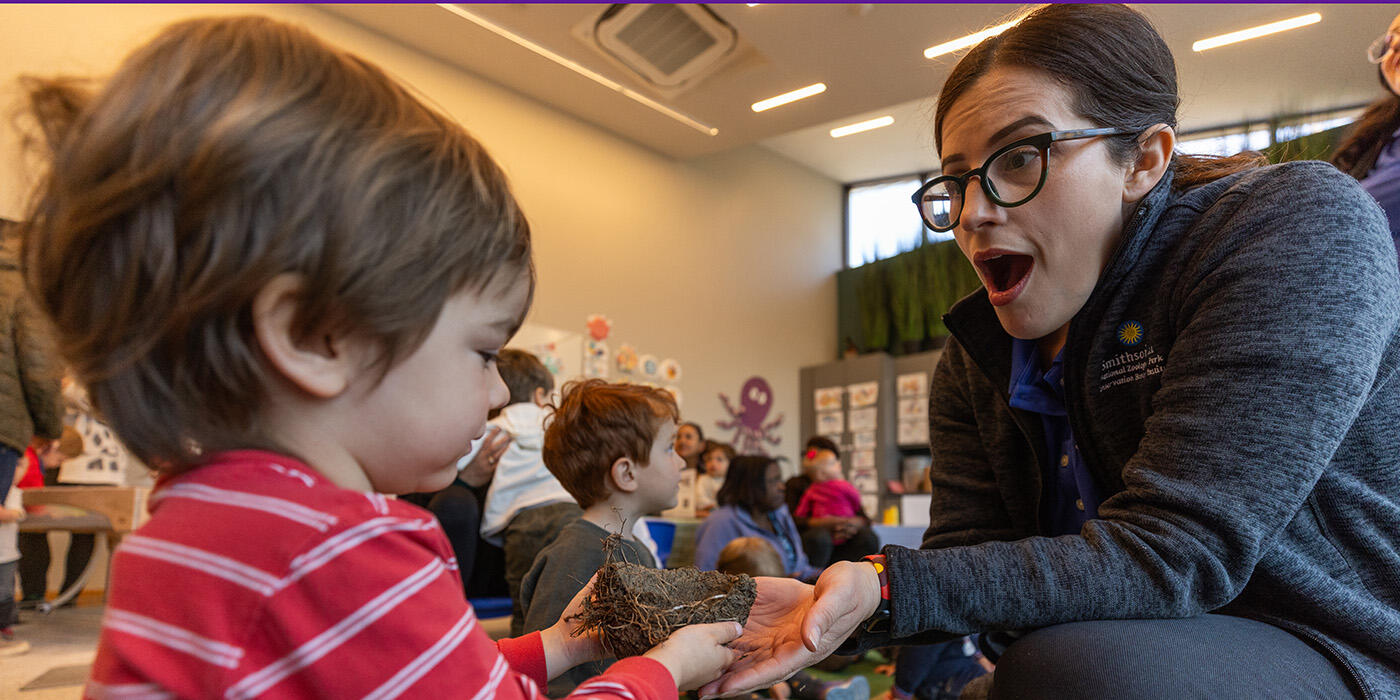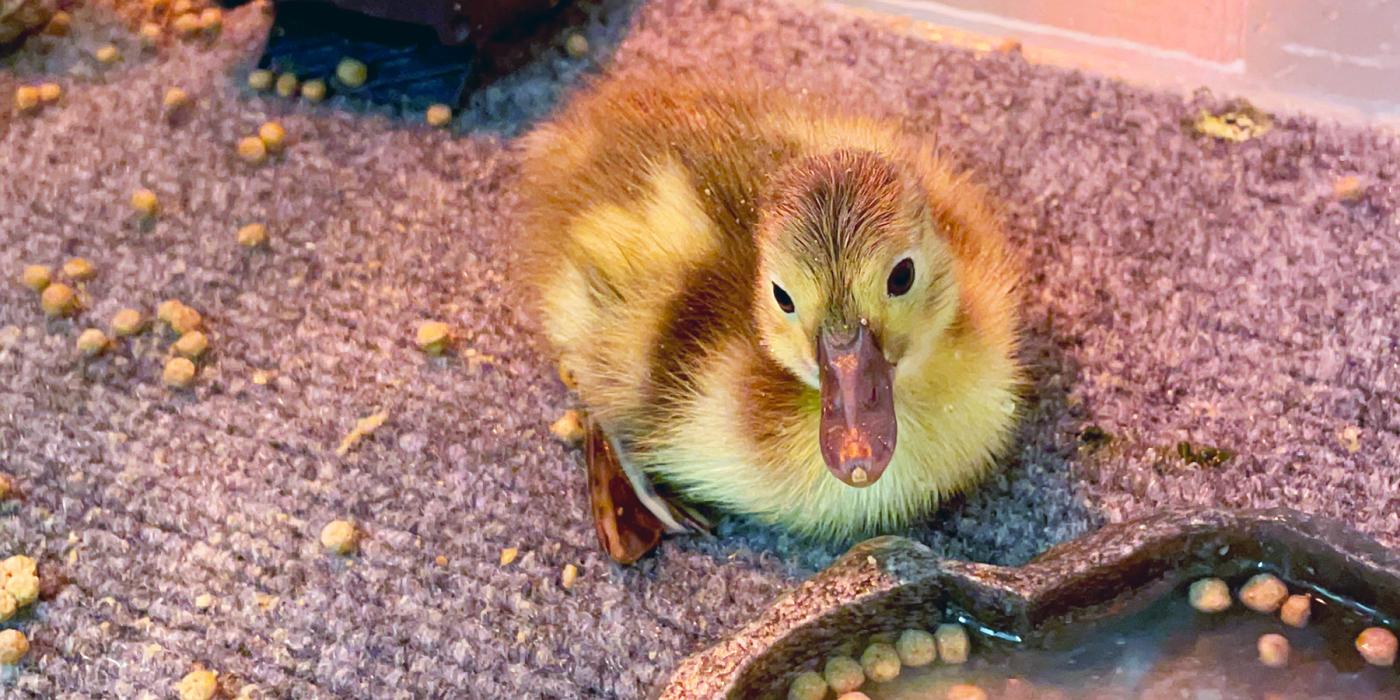Historic Hatching: Northern Shoveler Ducklings

Egg-citing news: in May and June, Bird House keepers welcomed three northern shoveler ducklings — the first of their species to hatch at the Zoo since 1908! The ducklings are the offspring of 4-year-old parents Albus and Minerva, who are on exhibit in the Prairie Pothole aviary, as well as a pair of 3-year-old unnamed shovelers who reside in an off-exhibit area.
In this video, two shoveler ducklings are seen paddling with a pair of gadwalls. Turn up the volume to hear their adorable peeps!
During breeding season, male shovelers’ plumage becomes more flashy: their heads turn vibrant green, their chests brilliant white and their underbellies chestnut brown. Both males and females sport a bright green wing patch that can be seen during flight. As the daylight and temperatures increase, these birds are triggered to breed.
Male shovelers court females by making a wheezy “took took” call, then swim or fly a short distance away. An interested female responds with an equally nasally quack and flies away with her chosen mate. Northern shovelers form pair bonds and stay with the same partner until the fall, when they leave their breeding grounds.

An adult male northern shoveler with nonbreeding plumage. Roshan Patel/Smithsonian.
To set the mood for breeding, keepers gave Albus, Minerva and the unnamed pair extra grasses, which provided a private place to hide and were used as nesting materials. Shoveler moms typically incubate their eggs for about 24 days.
When Minerva and the unnamed female laid her eggs, keepers swapped the real ones for decoys and placed them in an off-exhibit incubator for safe keeping. While the moms sat on the decoys, the males stayed by their mates’ sides, protecting them from other ducks.
Even at a young age, northern shovelers sport their namesake “shovel-shaped” bill. At hatching, the bill is fairly small, but elongates as the ducklings reach adulthood. Lined with tiny, comb-like bristles (called lamellae), a shoveler’s bill helps filter out sand and silt so the ducks can feast on nutritious aquatic plants and invertebrates—including insects, snails, crustaceans.
At the Bird House, keepers feed the ducklings nutrient-rich pellets and mealworms and gave them a shallow pool where they could wade and practice swimming. In the fall, these juveniles will go off on their next big adventure—moving to other zoos around the country to serve as ambassadors for their species.
Meantime, come visit Albus, Minerva and many more amazing avian ambassadors at the Bird House!
Related Species:



